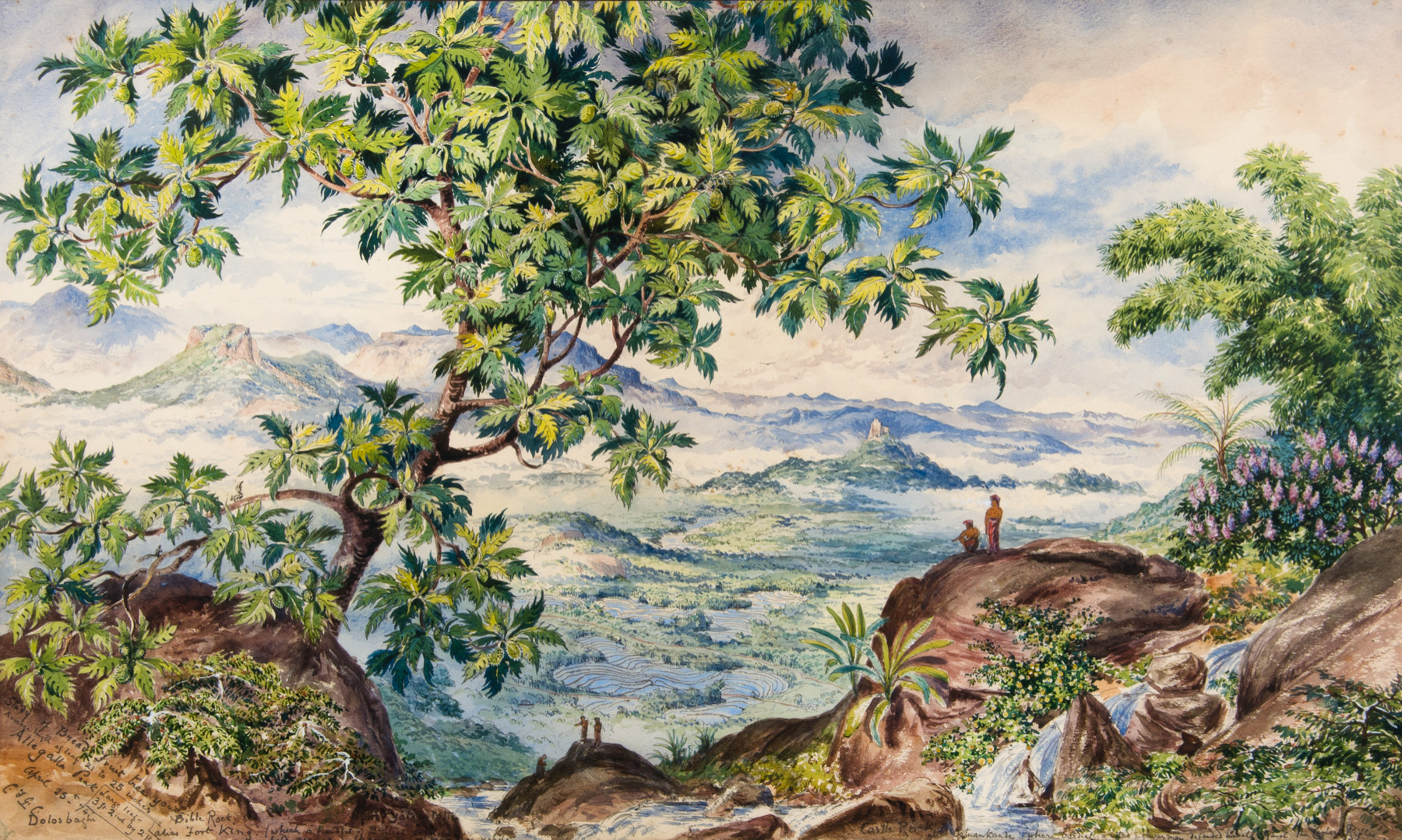
(click image to enlarge)
Alagalla Peak is the highest point of the Alagalla Mountain Range, located on the rail route from Colombo to Kandy, and standing at almost 4,000 feet. Constance Frederica Gordon-Cumming took this train line in the spring of 1874 and spent some time staying in the area before moving onwards to Kandy, enjoying ‘happy days and weeks spent exploring many a lovely corner in that vast panorama’. She recalled with particular fondness a stay ‘perched at the base of the mighty crag which crowns Allagalla Peak ... in a sheltered nook embosomed in fruit-trees, and overlooking such a magnificent view as we may sometimes obtain for a few moments by climbing some mighty Alp, but which few homes can claim as their perpetual outlook’ (Two Happy Years in Ceylon, 1892, page 159). It is likely that this vantage point was the inspiration for the present watercolour.
Gordon-Cumming’s annotations to this work record much of the surrounding area. ‘Dolosbaghi’ (Dolosbage) and ‘Yattiantotte’ (Yatiyantota) were local villages and tea estates, where Gordon-Cumming may have stayed during her exploration of the area. The flat-topped rock seen on the left of the image is ‘Bible Rock’, or Bathalegala, so named because it is said to resemble an open book. On the right of the image is ‘Castle Rock, alias Ootnankande’ (Uthuwankanda), a rock formation in the shape of an ancient castle. Gordon-Cumming also refers to the famous Ceylonese highwayman and bandit Sardiel, who operated in the area until his eventual capture and execution in 1864. Sardiel has become a heroic figure in Sri Lankan lore thanks to his insurgency against British colonial rule. He was known to distribute much of what he stole amongst the poor, giving him the nickname the ‘Robin Hood of Sri Lanka’.